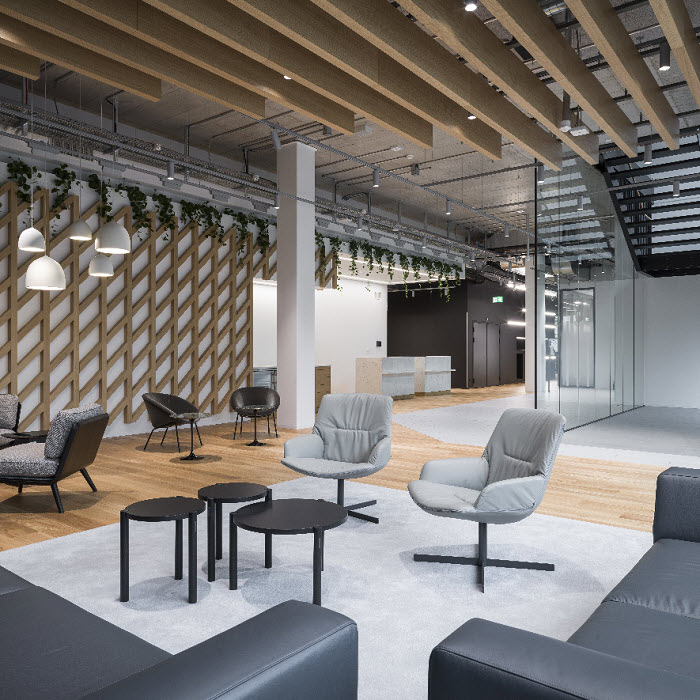Post-pandemic well-being has been saved

Perspectives
Post-pandemic well-being
Lessons for the transformed work environment
Deloitte’s Chief Well-being Officer shares insights on the health and wellness challenges today's C-suite leaders and their employees face as they negotiate the changing work environment.
Returning to work in a “new normal”
You may have noticed that re-entry anxiety has reached a crescendo in recent weeks. Many business leaders have been preparing their teams and workplaces for a smooth return to the office, but the journey to a “new normal” has been anything but linear.
Virus variants are driving cases up in several states. Vaccination rates have stalled. On top of that, there’s resistance among many people who believe that pre-COVID workplace dynamics—especially the in-person, five-day work week—may no longer be ideal or even beneficial.
Still, as we surpass two years into this pandemic, we’ve learned a few hard lessons from the unpredictability of the virus and all that it entails. For anyone who’s spent time in a virtual meeting, they know there’s been an abrupt and unprecedented shift in how we relate to one another. Moreover, this experience has often challenged our core beliefs about work, compromised our health and well-being, and tested our resilience.
In my role as Chief Well-being Officer at Deloitte, I’ve had a front-row seat to these evolving challenges and can share three lessons that I believe can help guide our return-to-work policies.
Lesson #1. Not everybody needs to work in the same way or even be in the office, after all.
In a Deloitte survey asking clients how they were approaching the return to the workplace, a majority of employers (68%) felt the “new normal” will primarily be the implementation of a hybrid model. Just 21% said they anticipate returning to a physical environment.
Of course, there are jobs that can’t be done online—and I’m personally grateful to the millions of front-line and essential workers who have done these difficult jobs since the onset of the pandemic.
But even for the jobs that have historically relied on close collaboration, our forced mass-virtual experience has demonstrated our capacity to adapt to circumstances without sacrificing productivity or performance. In our survey, 81% of technology, telecommunications, and media companies—organizations frequently at the leading edge of innovation—said they plan to introduce hybrid work. Though 28% of executives in this industry noted concerns about maintaining company culture, 50% of these employers expect a reduction in office space.

Lesson #2. Returning to normalcy at work doesn’t simply mean hitting play after a forced pause.
Employers are justifiably concerned about the challenges the future mix of onsite, remote, and hybrid workplaces holds. From the executives we surveyed, the biggest concerns were maintaining culture (32%) and maintaining high performance (26%). Notably, only 10% said they were concerned about employees not wanting to return in-person (10%).
These are complex scenarios. But the pandemic has hoisted employee health and well-being from a nice to have for many organizations to a must have.
I’m encouraged by the commitment to physical safety: 91% of executives in our survey said they will require masks, and 89% will require social distancing. And for C-suite leaders, it’s critical to recognize the mental health challenges that have emerged and use this situation as an opportunity to empower people to work differently.

Lesson #3. This crisis will have long-term workplace implications.
One crisis that many C-suite leaders should place at the top of their lists is a potential epidemic of burnout. Technology has been incredibly effective in augmenting and enhancing our human abilities, and it’s permitted us to have human connection while we’ve been isolated. But we haven't necessarily adapted to it really well and so the technology is using us. In my recent book, Work Better Together, co-authored with my colleague Anh Phillips, we discuss how a work culture driven by quality relationships is key to spotting the signs of isolation and burnout.
Across the C-suite, executives now have the opportunity to transform work culture so that it prioritizes the health and well-being of people over systems, changes established hierarchies and routines, and instead identifies behaviors that should be rewarded.
Tuning out the noise might seem difficult right now. But if C-suite leaders learn to reorient employee and team goals, work styles, and technology use around building connections and supporting employee well-being, it may help smooth out the road to return.






